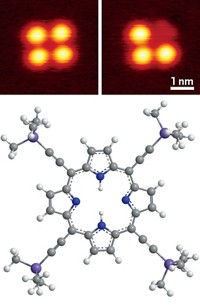Advertisement
Grab your lab coat. Let's get started
Welcome!
Welcome!
Create an account below to get 6 C&EN articles per month, receive newsletters and more - all free.
It seems this is your first time logging in online. Please enter the following information to continue.
As an ACS member you automatically get access to this site. All we need is few more details to create your reading experience.
Not you? Sign in with a different account.
Not you? Sign in with a different account.
ERROR 1
ERROR 1
ERROR 2
ERROR 2
ERROR 2
ERROR 2
ERROR 2
Password and Confirm password must match.
If you have an ACS member number, please enter it here so we can link this account to your membership. (optional)
ERROR 2
ACS values your privacy. By submitting your information, you are gaining access to C&EN and subscribing to our weekly newsletter. We use the information you provide to make your reading experience better, and we will never sell your data to third party members.
Materials
Graphene Surface Improves SERS
Smooth substrate gives cleaner, more reproducible SERS spectra
by Celia Henry Arnaud
June 4, 2012
| A version of this story appeared in
Volume 90, Issue 23
A combined metal and graphene substrate improves the performance of surface-enhanced Raman spectroscopy (SERS), Jin Zhang of Peking University and coworkers report (Proc. Natl. Acad. Sci. USA, DOI: 10.1073/pnas.1205478109). Most SERS substrates have rough metal features that sometimes interact with analytes in a way that can complicate SERS spectra. Zhang and coworkers fabricate their new SERS substrate by depositing an array of gold or silver nanoislands on the back of a graphene monolayer. Like other SERS substrates, the metals have electromagnetic “hot spots” that enhance the Raman signal. In the new substrate, these hot spots permeate the graphene and generate localized electromagnetic enhancement on the flat surface. Analyte molecules bind on top of the flat surface, where they are isolated from the underlying metal. The researchers recorded SERS spectra of rhodamine 6G and copper phthalocyanine and found that those spectra are cleaner and more reproducible than spectra from conventional SERS substrates. The group demonstrated the method using a transparent, freestanding, and flexible form of the substrate, which allows direct analysis of samples of any morphology.




Join the conversation
Contact the reporter
Submit a Letter to the Editor for publication
Engage with us on Twitter